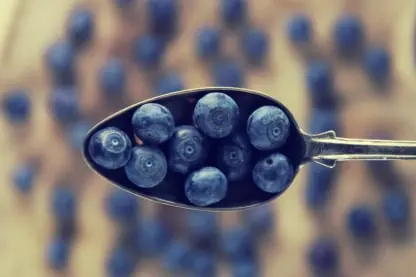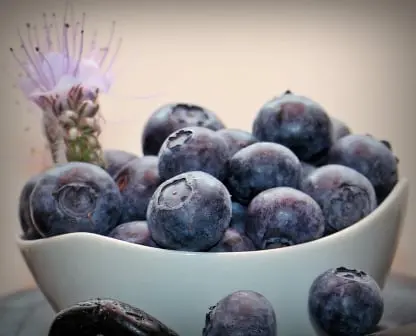Berry Food safety management app for all berries: manage berry quality, capture photos, supplier berries quality feedback
Berry Food safety management app for all berries: manage berry quality, capture photos, supplier berries quality feedback. Slash Food Safety costs. Eliminate waste, price negotiations, and QC mistakes. Maximize quality consistency.

Berry Food Safetys during production
View app Specifications.
The requirements will apply to all primary producers and primary processors of berries:
A primary producer is a business that grows and/or harvests berries.
A primary processor is a business that does any of the following: washing, trimming, sanitising, sorting, storing, combining and packing berries, and transporting berries between pack houses.
What are the requirements?
The requirements of Standard 4.2.7 include:
notifying authorities of the business’s name, contact details and activities with berries
traceability: being able to track where berries have come from (and back to growing site) and who they have gone to
managing inputs: including soil, fertiliser and water, so they do not make berries unsafe to eat
hygiene: good personal hygiene and health practices of people that handle berries, as well as good hygiene of the premises and equipment they use.
The requirements will come into effect from 12 February 2025.
Refer to Standard 4.2.7 Primary production and processing standard for berries for full details.
Why has a standard been introduced for berries?
If berries become contaminated with harmful microorganisms or other hazards, they can make people sick. Cases of foodborne illness in Australia and overseas have been linked to fresh berries.
The standard aims to reduce the presence of hazards on berries, keeping the fruit safe for consumers to eat raw. Actions to manage the hazards start on the farm.
Berries can become contaminated from animals, the growing location, weather events, soil, manure and composts, water and poor hygiene of workers and equipment.
The standard sets minimum requirements for food safety, to address the main risks during berry production.
What berry crops are included?
The standard applies to fresh raw berries including, but not limited to:
strawberries
blueberries
berries of the Rubus species such as blackberries and raspberries.
What do I need to do?
Contact your state/territory food regulatory authority for more details on the requirements you must meet under the standard.
Read more on each of the requirements in the standards and what it means for your business in Chapter 4: Primary production standards (Australia only).

Daily Berry packhouse hygiene checklist
Next to taste, Driscoll’s has made food safety the single most important focus of growing berries. Our primary concern is for the wholesomeness of our product and the safety of our berry consumers, our employees, our independent farmers and their workers. One of our highest priorities is to continually build on our industry leadership in food safety standards. This is our commitment to ensure that we always provide you with the freshest, safest, most flavorful berries.
DRISCOLL’S GLOBAL FOOD SAFETY PROGRAM
Our berries are grown, harvested and shipped with the highest standards of care possible and our rigorous food safety standards apply regardless of where the berries are grown. Driscoll’s Global Food Safety Program has been developed from decades of research, consumer feedback and close cooperation with food safety experts as well as state, federal and international regulatory agencies. It is founded on the principles of Good Agriculture Practices (GAPs) established by the United States Food and Drug Administration (FDA) and reinforced through education, laboratory assays and annual third party audits.
AUDITS
As part of our Global Food Safety program, Driscoll’s employs independent third party auditors to verify that GAPs are being followed on every farm and facility around the world. Audits are performed by certified, independent third-party agencies to ensure adherence to Good Agricultural Practices for food safety set by the FDA. Our Global Food Safety Program audits are performed in the fields, cooling facilities and distribution facilities to monitor soil, water, fertilizer use, pest control methods, harvest practices and food safety and security procedures. The results of these audits are reviewed by Driscoll’s food safety staff. Non-compliance issues are addressed and corrective measures are verified by Driscoll’s.

Berry Food safety & management
The health and wellbeing of people across the globe depends on access to safe and nutritious food. With one in ten people worldwide falling ill from contaminated food annually, food safety standards are crucial for protecting the lives of all.
Food safety standards offer guidelines for food consumption, handling, transportation, storage, and more to ensure food is safe and nutritious when it reaches grocery store aisles. Achieving these standards is a shared responsibility across the whole supply chain, from producers and manufacturers to retailers and consumers.
Plastic innovation is critical to food safety along the supply chain. From food preservation to essential protection from disease, plastic’s protective properties help improve the lives of people everywhere, offering several advantages:
Reduced spread of food-related diseases
Prevention of harmful gases from being absorbed by perishable foods
Tripling the longevity of certain fruits or vegetables
Prevention of food waste and spoilage
Dramatically reduced greenhouse gas emissions

Berry Supplier Food Safety & management
How berries become unsafe to eat
Some berries can carry harmful bugs, like:
hepatitis A virus
norovirus
Shiga toxin-producing E. coli (STEC)
Salmonella.
Harmful bugs can come from the farm where berries are grown. Sources can include:
unclean water or soil
infected workers and animals.
Food handlers, machines, and equipment can contaminate berries after they are harvested. The bugs can be spread during freezing, mixing, or packaging. This can make the berries unsafe to eat.
Making berries safe to eat
You can make frozen berries safe to eat by either:
bringing them to the boil, or
cooking them at a temperature over 85°C for at least 1 minute.
Washing frozen berries will not remove the risk.
Most viruses and bacteria found on frozen berries can survive freezing. They also can survive freeze-drying, and heat treatments of less than 85 degrees Celsius.
Frozen berries that have been heat-treated can be cooled rapidly and refrozen for subsequent use.
Video: Heat-treating frozen berries at home (1.46)
Transcript – show/hide
Some people are more at risk
Preparing berries safely is important when you:
make uncooked foods that normally contain frozen berries, like smoothies and desserts
serve berries to people with health risks.
People with health risks include:
older people, especially those with underlying health conditions
young children
pregnant women
people with low immunity.
Find out about food for people with low immunity
Find out more
Hepatitis A virus fact sheet [PDF, 203 KB]
Hepatitis A disease – Ministry of Health
Norovirus – Ministry of Health
Who to contact
If you have concerns for your health, consult your medical professional or phone Healthline at 0800 61 11 16.
If you have questions about the risks of imported frozen berries, email [email protected]
FEEDBACK
CONTACT US
SUBSCRIBE TO MPI
SCIENCE
LEGAL
RESOURCES AND FORMS
MPI WEBSITE DISCLAIMER
SITEMAP
COPYRIGHT
PRIVACY AND SECURITY
The Shielded Site Project - Women's Refuge
Agriculture and Investment Services logo.
Biosecurity New Zealand logo.
Fisheries New Zealand logo.
New Zealand Food Safety logo.
Te Uru Rākau New Zealand Forest Service logo.